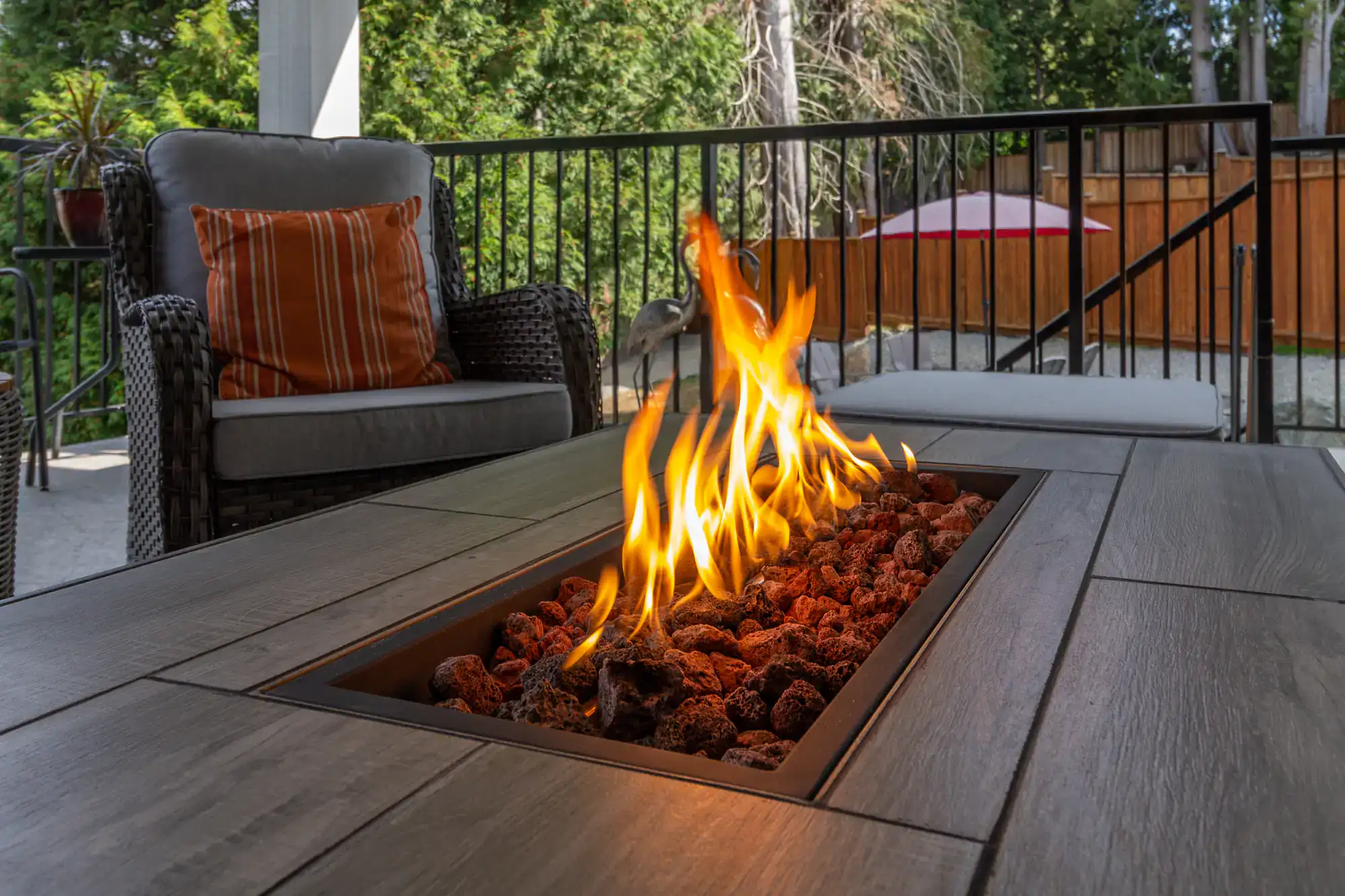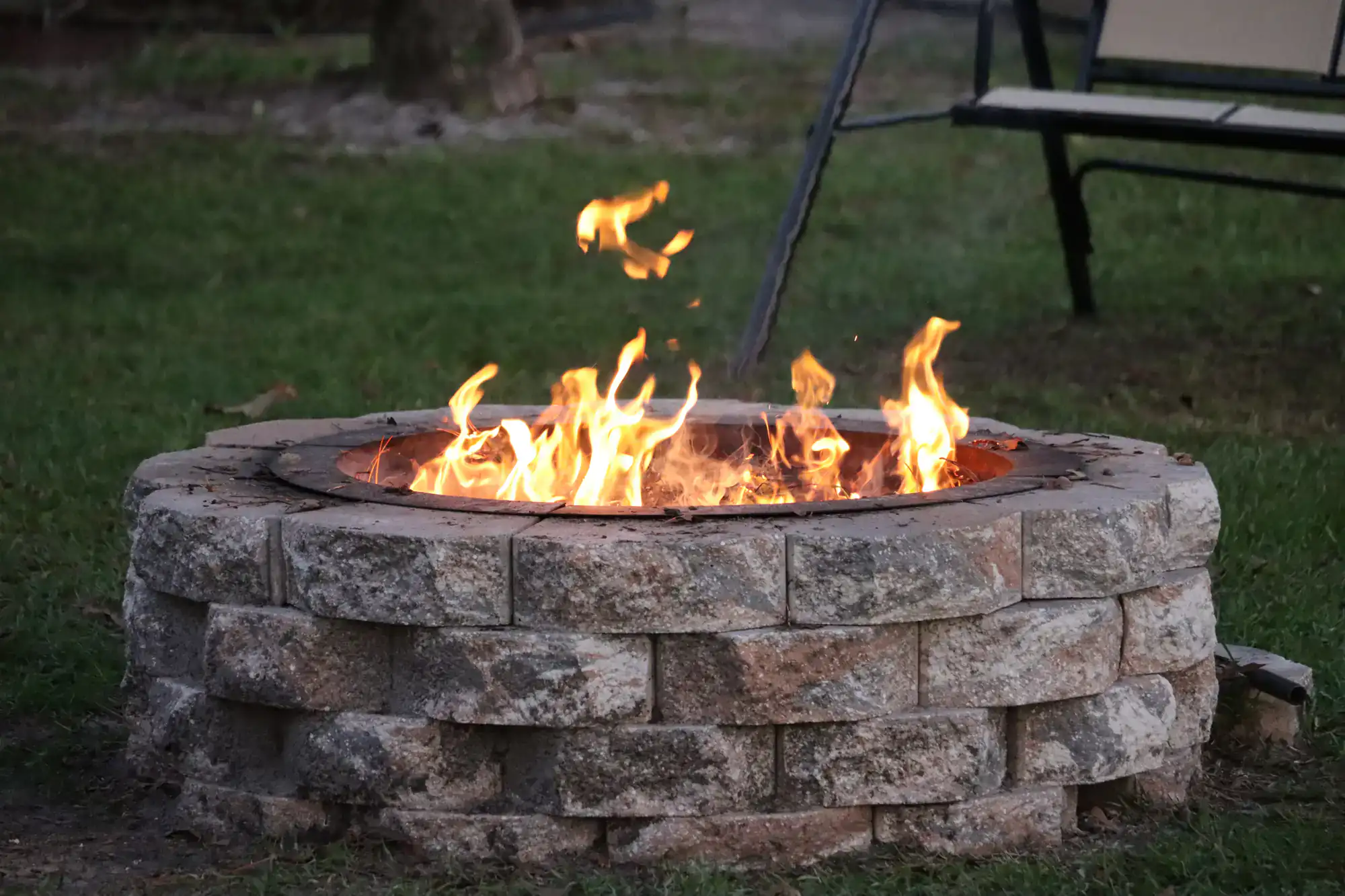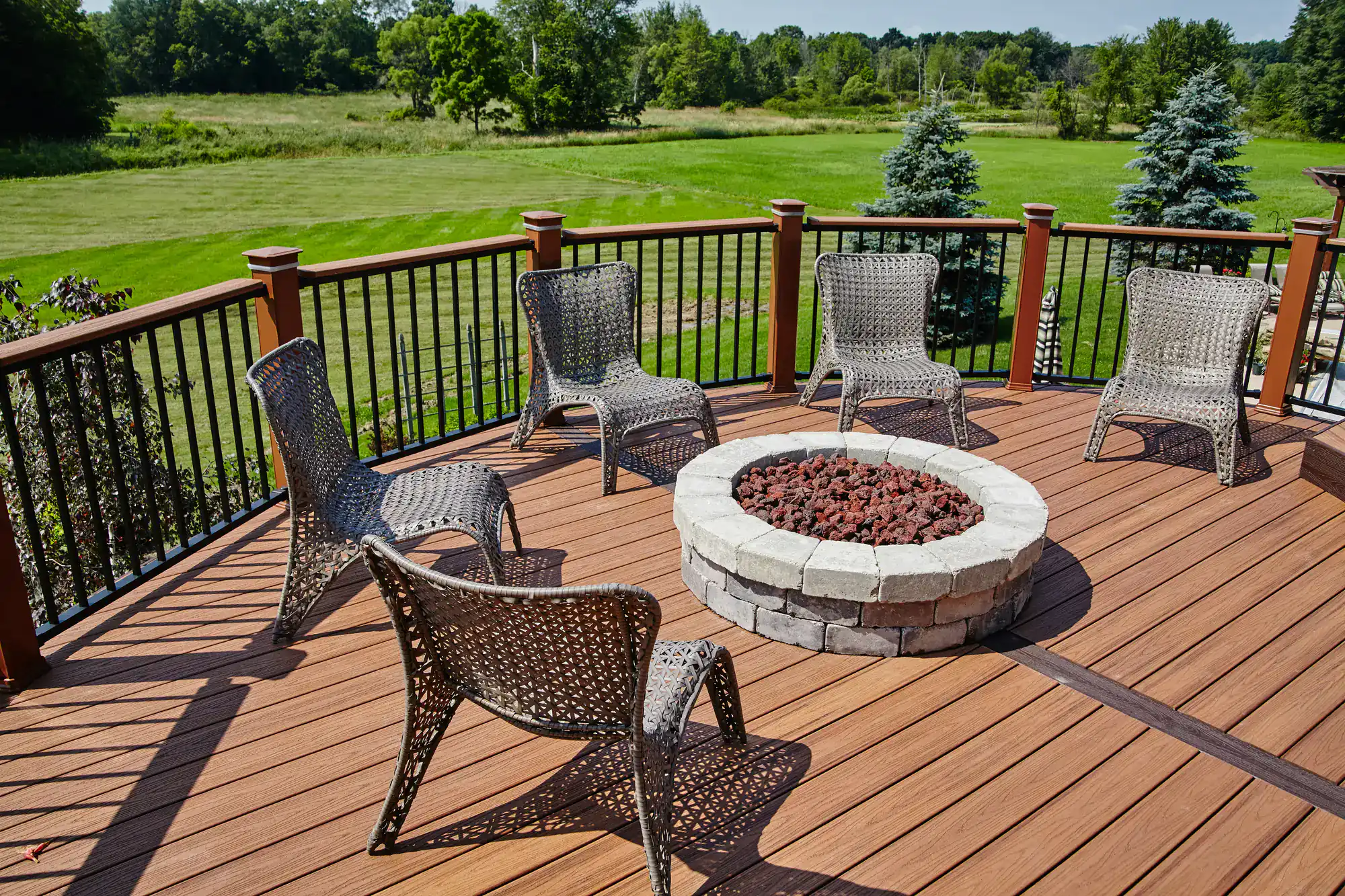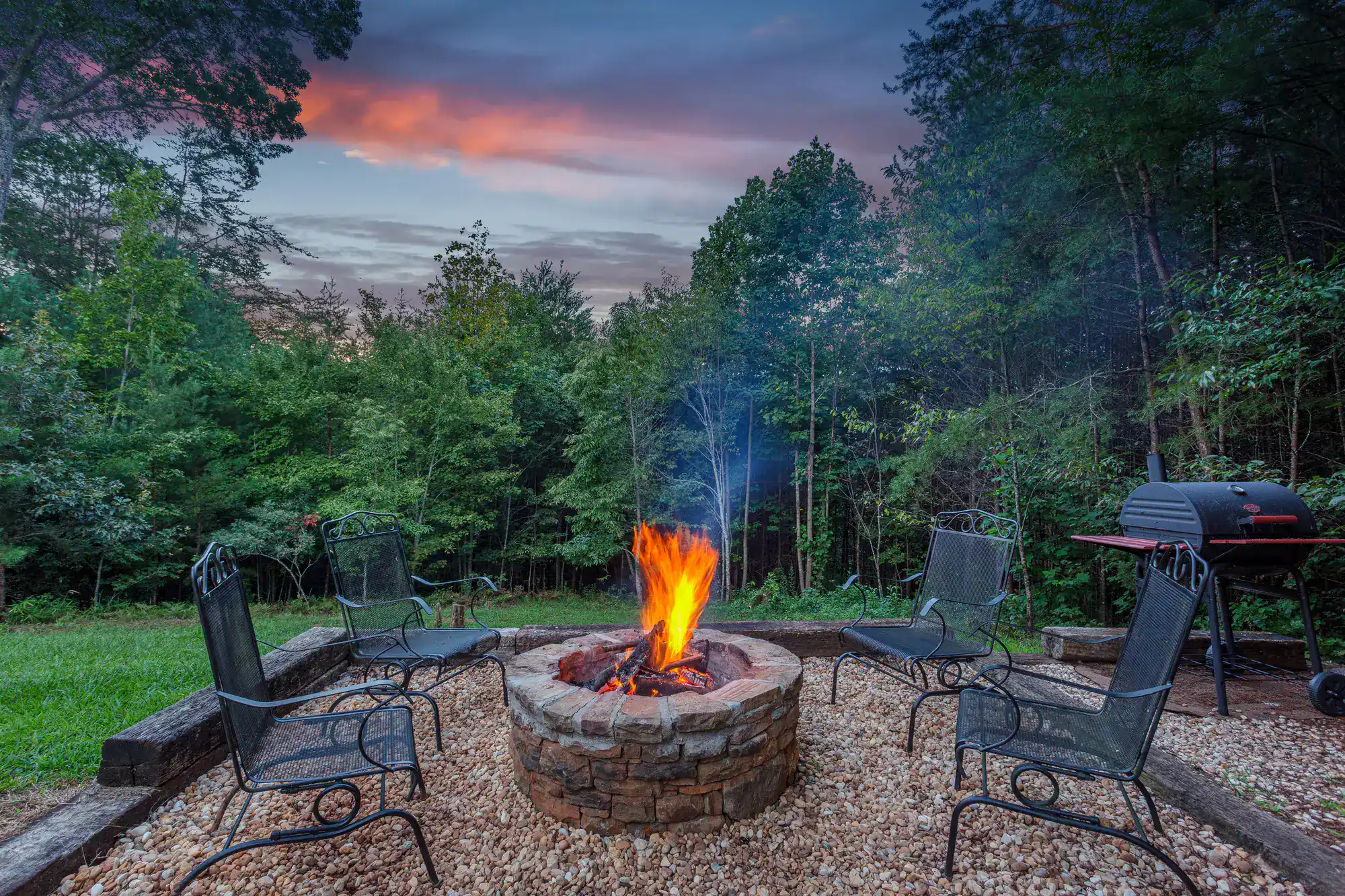

You get a fire pit that actually works the way it should. No smoke blowing in faces because someone guessed at the wind patterns. No cracked pavers from improper base preparation. No safety concerns keeping you awake at night.
Your backyard becomes the place everyone wants to be. Weekend gatherings happen naturally. Kids roast marshmallows safely. Adults relax with a glass of wine under the stars. The space you’ve been ignoring suddenly becomes your favorite room in the house.
And here’s what really matters: it’s built right from day one. Proper drainage, correct clearances, materials that handle Florida’s weather without falling apart. You’re not calling someone back in six months to fix what should have been done correctly the first time.
We’ve been serving Citrus County families since 1995. We’re the authorized contractors for Tremron, Flagstone, and Belgard—which means we know these materials inside and out, not just what looks good in a brochure.
We’re also the exclusive Seal ‘n Lock distributor in our county. That’s not an accident. Companies don’t hand out exclusive partnerships to contractors who cut corners or disappear after the check clears.
Wildwood residents choose us because we understand this area. The soil conditions, the drainage challenges, the way Florida weather affects outdoor installations. We’ve been handling these projects since before The Villages expansion brought thousands of new homeowners to the area.

First, we visit your property to assess the space, discuss your vision, and handle any permit requirements. We’re looking at drainage, clearances from structures, prevailing wind patterns, and how the fire pit fits with your existing landscape.
Next comes site preparation. We excavate to proper depth, install the base materials, and ensure drainage won’t be a problem down the road. This is where corners get cut by other contractors, but it’s also where fire pits fail years later.
Then we build your fire pit using manufacturer-approved methods and materials. Each course is properly aligned and secured. We install the metal fire ring that protects your investment from heat damage. The surrounding area gets finished with your choice of pavers or other materials.
Finally, we test everything, clean up completely, and walk you through proper use and basic maintenance. You get a fire pit that’s ready to use safely from day one.

Ready to get started?
Your fire pit installation includes everything needed for a complete, functional outdoor feature. Site evaluation and permit handling, proper excavation and base preparation, professional installation using authorized materials, and complete cleanup.
We use materials specifically chosen for Central Florida conditions. Pavers that won’t crack from thermal expansion. Fire rings rated for the heat levels your fire pit will generate. Drainage solutions that handle our heavy summer rains.
In Wildwood, we see a lot of homeowners who want their fire pit integrated with existing patios or positioned to take advantage of lake views. We can work with your current landscape or design something completely new. The goal is a fire pit that looks like it belongs in your space, not something that was dropped there as an afterthought.
Most Wildwood fire pit projects include some form of built-in or coordinated seating. Makes sense—you’re creating a gathering space, so people need comfortable places to sit. We can incorporate seating walls, coordinate with existing furniture, or recommend options that complement your fire pit design.

You need a minimum of 100 square feet of open space around your fire pit—that’s roughly a 10×10 foot area. This isn’t just for comfort; it’s for safety and functionality.
The fire pit itself is typically 3-4 feet in diameter, but you need room for seating, safe movement around the fire, and proper clearances from structures. Florida building codes require at least 10 feet from your house, and many municipalities have additional requirements.
We also consider things like prevailing wind directions, overhead tree branches, and how the space flows with your existing patio or deck. A fire pit that meets minimum requirements but feels cramped or awkwardly positioned won’t get used the way you’re hoping.
Both gas and wood-burning fire pits work well here, but each has advantages depending on your priorities. Gas fire pits offer convenience—instant ignition, easy control, and no cleanup. They’re also not affected by burn bans that sometimes happen during dry periods.
Wood-burning fire pits give you that authentic campfire experience with crackling sounds and the smell of burning wood. They also help repel mosquitoes naturally, which is a real benefit during Florida’s warmer months.
For materials, we recommend pavers or natural stone that can handle thermal expansion and our heavy summer rains. Cheap fire pit kits from big box stores often crack or deteriorate quickly in Florida conditions. The materials we use are specifically rated for outdoor use in humid, high-heat environments.
Permit requirements depend on the type and size of fire pit you’re installing. Permanent, built-in fire pits typically require permits, while some portable units may not. The rules also vary between city and county jurisdictions.
We handle permit applications as part of our service because we know the local requirements and have working relationships with the permitting offices. This saves you time and ensures everything is done correctly from a code compliance standpoint.
The permit process also includes safety inspections, which protect you as the homeowner. An inspector verifies proper clearances, appropriate materials, and safe installation practices. It’s not just bureaucratic paperwork—it’s making sure your fire pit is built safely.
Most fire pit installations take 2-3 days from start to finish, assuming normal conditions and no weather delays. Day one is typically excavation and base preparation. Day two involves building the fire pit structure and installing surrounding materials. Day three is finishing work and cleanup.
Complex projects with extensive seating, multiple levels, or integration with existing hardscaping can take longer. Weather can also affect timelines—we don’t pour concrete or set pavers in heavy rain, and Florida summers can bring afternoon thunderstorms.
We give you realistic timelines upfront and keep you updated if anything changes. Most homeowners are surprised how quickly the transformation happens once we start. One day you have an empty space, and a few days later you have a complete outdoor gathering area.
Building on top of existing pavers is faster and less expensive, but cutting the fire pit into the patio creates a more integrated, finished look. Both methods work well when done properly.
When we build on top, we create a stable base that distributes weight evenly across your existing patio. The fire pit sits slightly above the surrounding surface, which actually helps with drainage and makes the fire more visible from seating areas.
Cutting in requires removing pavers, excavating deeper, and pouring a concrete footing for the fire pit to sit on. Then we install a border around the base and relay pavers to match the surrounding area. It takes more time and materials, but the result looks like the fire pit was always part of the original design.
We install a heavy-duty metal fire ring inside every fire pit we build. This ring takes the direct heat impact and protects the paver or stone walls from thermal stress that can cause cracking over time.
The fire ring is sized and positioned correctly for your specific fire pit design. Too small and you don’t get adequate protection. Too large and it looks awkward or doesn’t fit properly. We use rings rated for the temperatures your fire pit will generate.
We also fill the bottom of the fire pit with sand up to the bottom edge of the ring. This creates a stable base for your logs and elevates the fire for better airflow and visibility. The sand also provides additional thermal protection for the fire pit structure underneath.
Useful Links